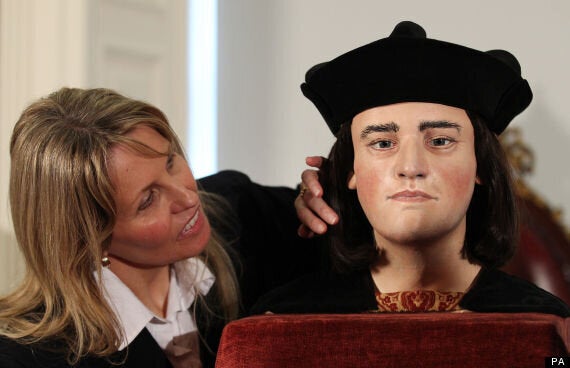Despite being dead for over 600 years, Richard III is continuing to cause rows - this time over how his tomb should look.
The tensions are so severe, pledges of money to fund it are being withdrawn.
The design of the raised stone tomb for the last Yorkist king which - failing a legal challenge by a group of his distant relatives - is to be installed at Leicester Cathedral has caused a row among the ranks of the society who campaigned to find the location of his forgotten grave.

The remains confirmed the King suffered from scoliosis
Now, some supporters of the Richard III Society say they will not help to fund the tomb, after the new design was revealed last week.
The move comes despite the society's chairman Dr Phil Stone saying the plan was "utterly inspired", and the involvement of society members in its design.
The project to rebuild the cathedral to accommodate the king's remains would cost up to £1.3 million, of which £96,000 will be spent on the tomb and vault.
The remains of Richard, killed at the Battle of Bosworth in 1485, were discovered last year amid the ruin of an old friary buried beneath a Leicester car park, thanks to a relentless hunt for his grave carried out by the society.
After experts confirmed the provenance of the bones earlier this year, the society drew up its own design for the late king's tomb and attracted several large pledges of money towards any future building costs, totalling £40,000.
But some of those original donors, including people from overseas, are now refusing to allow their pledges to be spent building the new design which had been drawn up by architects commissioned by a special panel, which includes Leicester Cathedral and the society among its membership.
The cathedral is governed by particular planning rules which mean the tomb, hewn from Swaledale limestone and carved with a large cross, must be in keeping with the building's wider use as a religious building.
This has displeased some of the original donors who had reportedly favoured a design emblazoned with more of the king's medieval heraldry.
The cathedral has made it clear the tomb must sit comfortably within the wider surroundings of the building, revealing a more modest design - with the society's support - last week.
Rev Pete Hobson, a Canon missioner of the cathedral, said: "We were of the view that not only was it the best possible design but also that the society people we had consulted with were broadly with us.
"The society's chairman Dr Phil Stone, expressed himself very positively about it."
He added: "Subsequently, as the images of the design have gotten out some like it and some do not.
"Dr Stone has been placed in a difficult position, but I am pretty clear he has not gone back on his initial comments, although I understand he is not convinced of the incised cross featured on the design."
On the matter of the money, Rev Hobson said there had never been any commitments received about the cash raised by the society's supporters.
He said: "It is entirely a matter for the society's donors as to whether that money comes or not.
"The tomb was never designed with any pledges of money in mind, although of course we would be grateful to any donor.
"If the design is approved we will seek to raise the money to pay for it."
Final approval rests with the Cathedrals Fabric Commission for England which is expected to make a decision by late October.
Dr Stone said: "The authorities at Leicester Cathedral know the society has been collecting money towards the cost of a tomb but now members are telling us they do not want their donations given to support the present design.
"The executive committee of the society will need time to sit down and discuss the matter."
He added the issue of exactly where the king would be re-interred remained "speculation" while the legal challenge by a small group of Richard's distant relatives remains unresolved.
The group from the Plantagenet Alliance is campaigning to have the last of the Yorkist kings buried at York, claiming it was the monarch's wish.
Richard, who reigned from 1483, was killed in the last battle of the bloody Wars of the Roses, with the discovery of his remains sparking a renewed interest in the period.